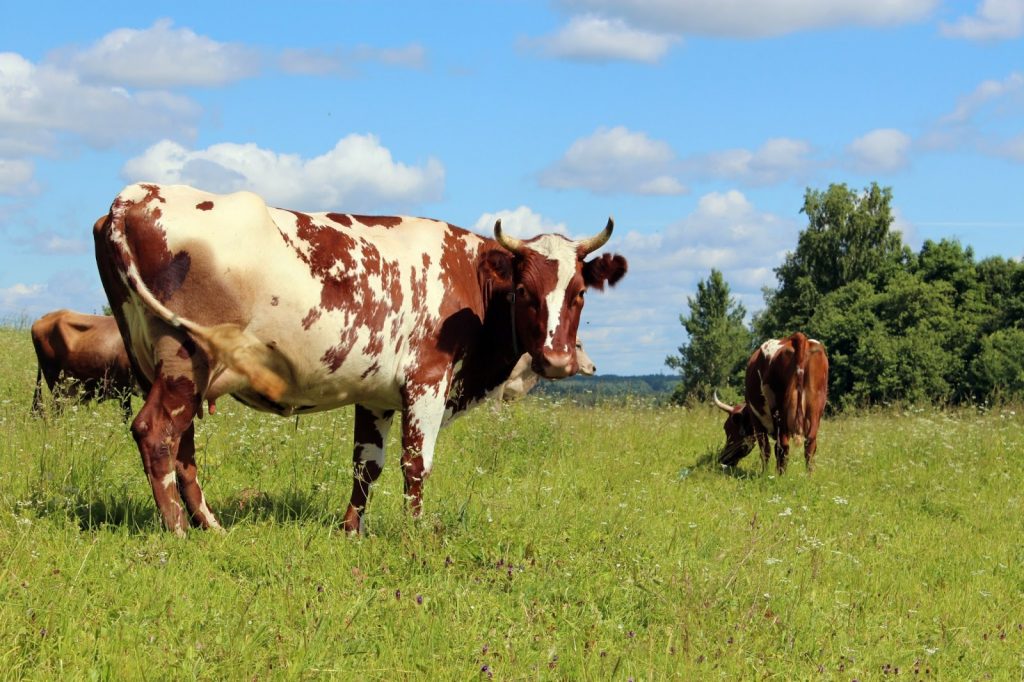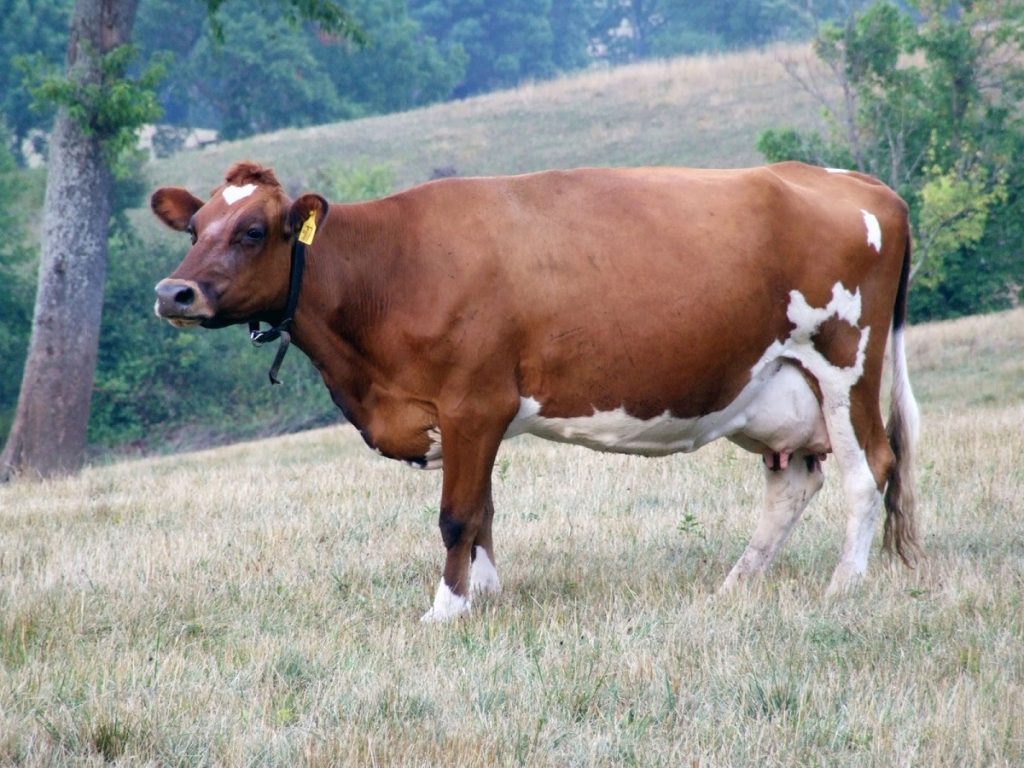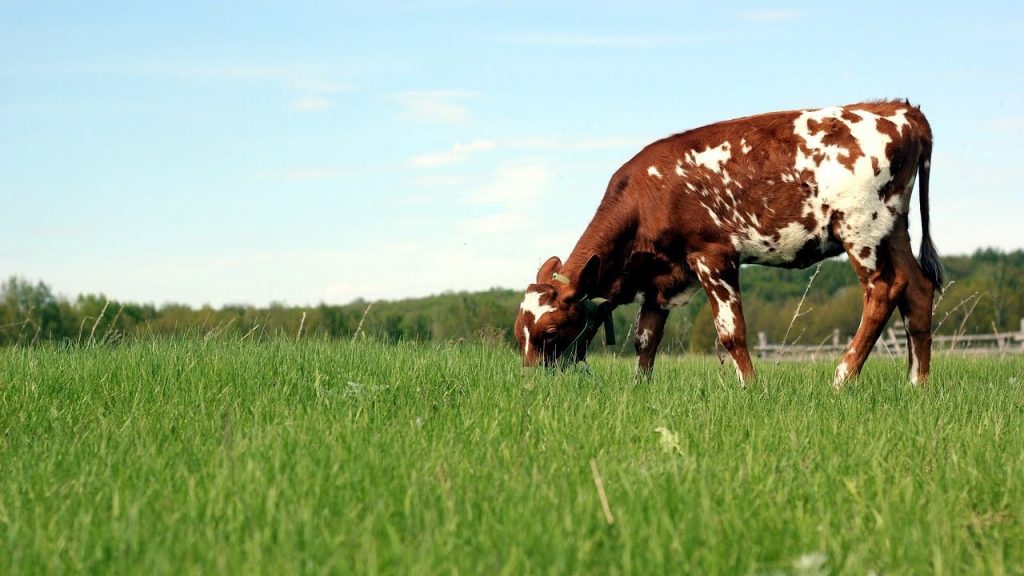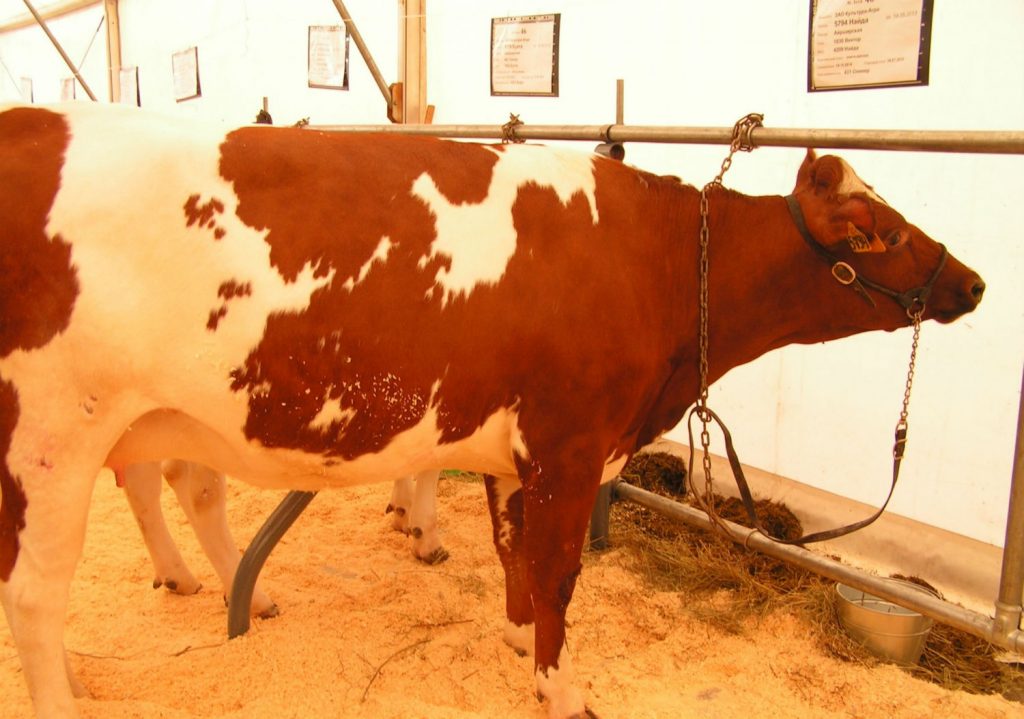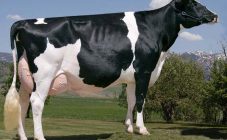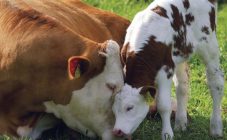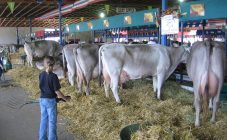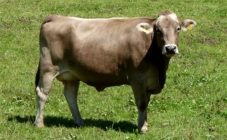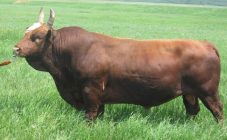Content:
The Ayrshire breed of cows has an interesting history dating back to the 18th century. The name comes from the Scottish county of Ayrshire. Arose through the selection of Alderney, Dutch, Tisvater cows and local cattle. It was described as an independent breed in 1862.
Due to the cold, difficult climate, animals have excellent endurance and unpretentiousness in comparison with other relatives from among cattle. Because of this feature, they quickly became popular with farmers around the world. Now the breed is especially common in such countries:
- Finland,
- Great Britain,
- Sweden,
- Canada,
- USA,
- Australia.
It was brought to Russia in the 19th century from Finland, therefore, it is mainly bred in the Russian open spaces in Karelia and the Leningrad region.
The Ayrshire cow can quickly adapt to any conditions. She is unpretentious in the choice of food, has a characteristic high milk yield and a special taste of milk.
Ayrshire breed of cows: characteristics
Animals of this breed are distinguished by their beauty and grace, harmonious physique. They are small in stature, up to 125 cm. Burenki weigh on average half a ton, bulls are a little more - 700-800 kg. The color is distinguished by the brightness of the red and white color, and the cows have a more intense color against the background of gobies. The cows of this breed have a small head, wide chest, short slender legs. A distinctive feature is the horns set aside slightly to the sides.
Young animals reach sexual maturity at 14 - 15 months, heifers at 24 - 26 months are ready for the first calving. Fertilization is best done in spring, when heifers are usually calm and docile. The calf is born with a weight of 25 - 30 kg. Babies quickly gain weight, their weight reaches 250 - 300 kg per year.
Productivity
Ayrshirok milk yield can reach 5000 - 7000 liters of milk per year. It has good taste with an average fat content of 4.2%.
Ayrshire owners value milk for the following features:
- low content of somatic cells;
- protein is contained in an amount of 3.5%.
Cows do not give up milk production even at 15 - 17 years.
Advantages and disadvantages of the Ayrshire breed
Content pros:
- high rates of milk yield, milk is considered one of the best in all characteristics of dairy products;
- disease resistance;
- unpretentious content;
- rapid puberty;
- endurance and quick adaptation to different climatic zones.
Also, farmers note the exceptional endurance and resistance of animals to the conditions of keeping and their rapid acclimatization. The exception is hot and dry climatic zones, to which it is difficult for cows to adapt, because they come from a country with more severe weather conditions. Rapid puberty is also taken into account by experienced breeders, the heifer is ready for fertilization already in the second year of life. Not the last place in the choice is played by the high survival rate of calves and ease of maintenance.
Cons of breeding this breed:
- aggressiveness of animals;
- cows are shy enough, as a result of which they can attack the shepherd.
One of the main reasons many livestock breeders are considering whether to start Irshirs is the aggressive nature of the animals. It is also frightening that cows have innate fearfulness, turning into aggression, due to which milk yield may worsen or milk completely disappear.
A significant disadvantage for Krasnodar breeders is that, despite the Ayrshire breed's adaptability to the cold, they can hardly tolerate heat, so their breeding in the southern latitudes will be associated with additional preparation in the content.
Conditions of detention
Since the cows of this breed are distinguished by high resistance to various diseases characteristic of cattle, and excellent endurance, they do not require special attention and significant efforts from the farmers. Both grazing conditions and stables are suitable for them, due to which they are one of the most commercial breeds.
Feeding
The main condition for keeping and breeding the breed is the diet. Throughout the year, animals need nutritional supplements and high quality feed. In the cold winter season, animals are kept in special stalls, where their diet includes grain, hay and combined feed.
Food for cows is divided into 3 types:
- Basic, that is, roughage. These include chaff, husk, straw, husk and hay. Farmers advise that they always be in the Ayrshire diet.
- Balanced. These are feeds that are saturated with useful elements and can increase milk yield. We are talking about soybean meal, grains, cake, oats and wheat.
- Compound feeds are specialized feeds that you can buy ready-made in a store or make yourself. The cow should eat up to 4 kg of compound feed at one time. If it contains too much starch, then the dose is reduced to 2 kg per dose.
Approximate daily diet of Ayrshirok
| Feed type | Quantity, kg |
|---|---|
| Hay | 2 |
| Silage | 20 — 25 |
| Compound feed | 3,5 — 7 |
| Barley | 0,5-2,5 |
| Wheat bran | 1 — 2 |
| Beer grains | 4 — 8 |
| Dry pulp | 1,5 — 3,5 |
| Salt | 0,075 — 0,1 |
| Minerals + vitamins | 0,05 — 0,1 |
The description of the breed says that before switching to grazing in the spring, green grass is gradually introduced to the animals in order to eliminate bloating.
In summer, cows make do with meadow grass and water, like other types of cattle.
Barn
In the summer months, cows do not tolerate the sun well. In this regard, a shed should be provided for them on the pasture, under which animals can hide from the scorching heat and rain.
As for the premises for keeping, in the barn it should be provided that one individual has up to 5 m². It should be light. For this, ordinary bulbs up to 40 W are suitable. Ventilation is mandatory so that fresh air is always supplied to the cows. The floors in the barn are made of wood, and the top is covered with straw, which is worth changing every week.
The stalls are equipped according to the size of the cow. The place of her leash can be made of metal pipes with a diameter of 10 cm. The floors should be either concrete or wood. Just like in a barn, they need to be covered with straw to avoid drafts.
Feeders
These can be separate boxes for up to 2 Ayrshire cows, or a long feed table with trough for all stalls at the same time. Its depth is up to 50 cm. It is also made of wood without a lid. If the animals move freely around the barn, then hanging feeders can be provided.
Breeder tips
Veterinarians recommend removing the horns of Ayrshirkas, as, due to their hot temper, they often sort things out and defend a place in the herd.As a result of such clashes, other cows or the instigators of the fights themselves may suffer.
In total, before you start breeding the Ayrshire breed, you need to consider all the pros and cons. Despite the fact that cows are the second in the number of milk yields and the first in the taste of milk, their disposition leaves much to be desired. The animals are too violent, which often calls into question the choice of farmers in their favor.
